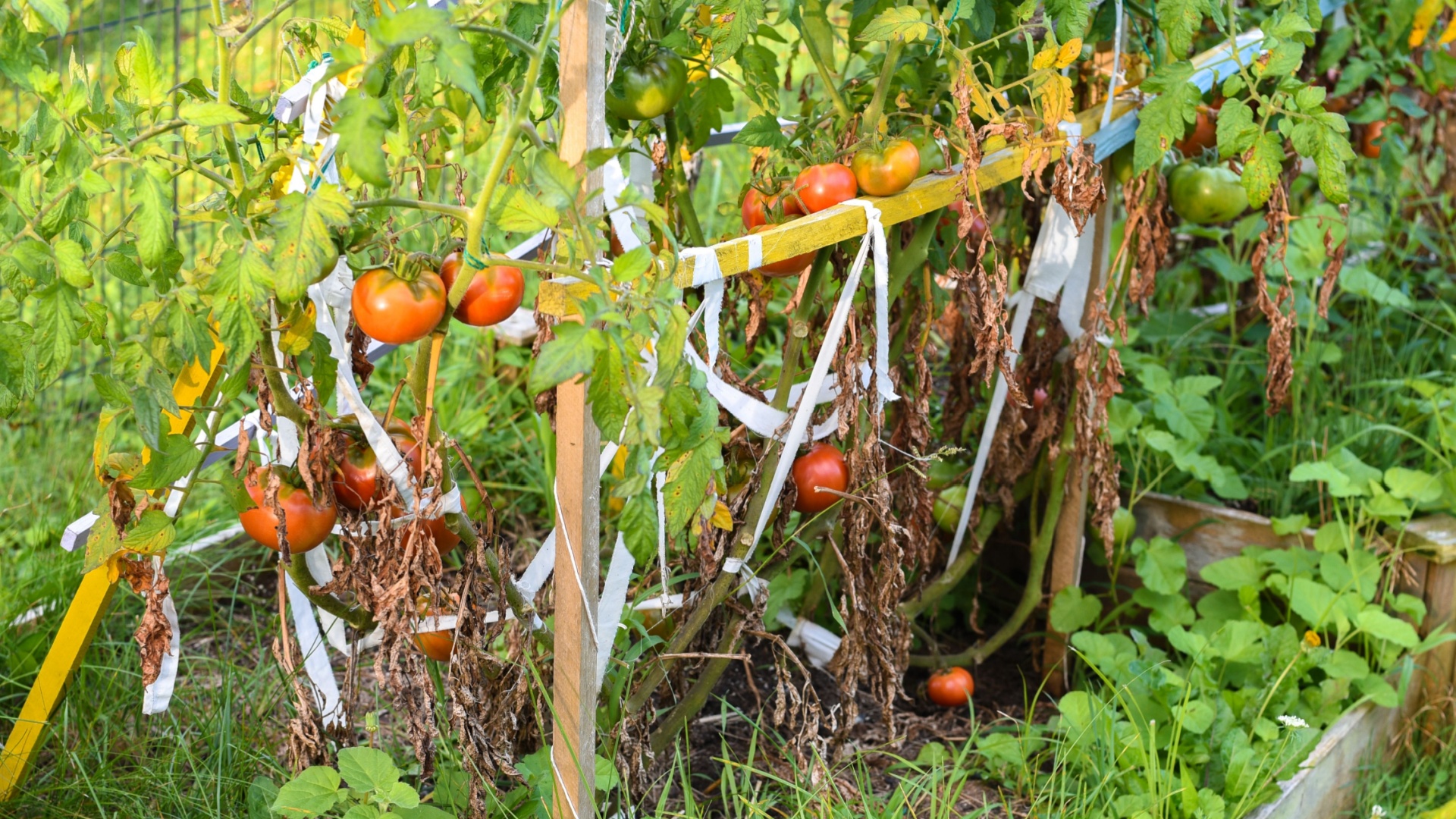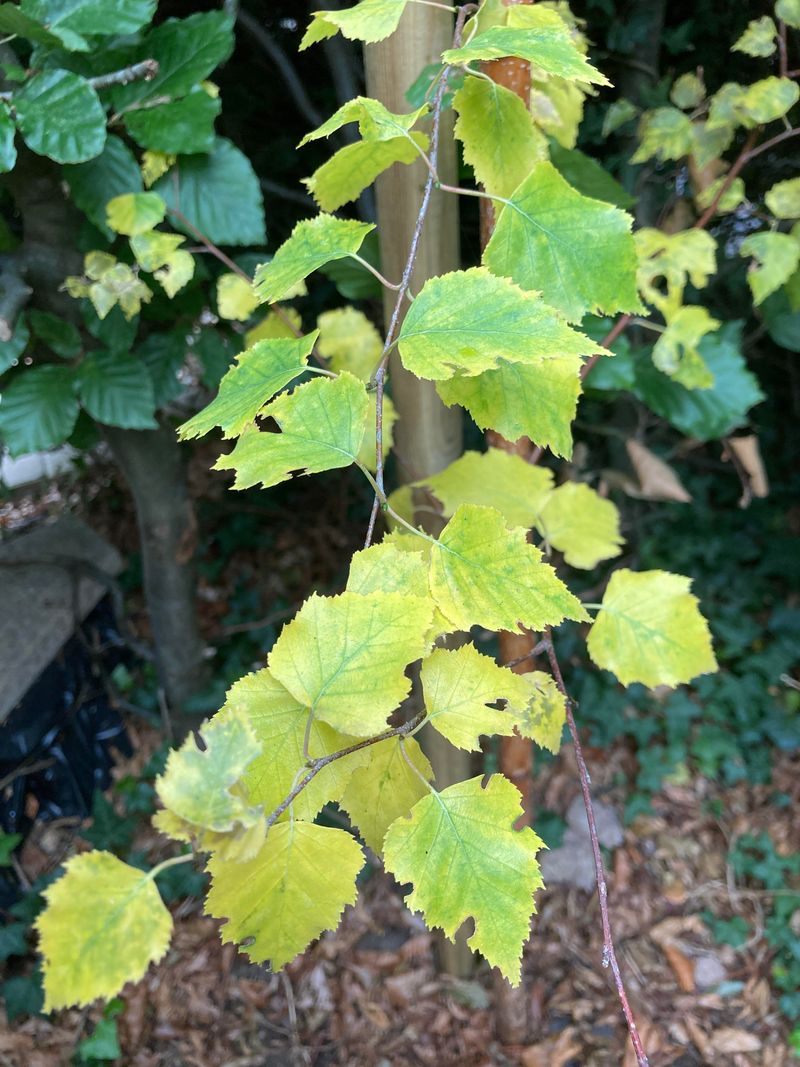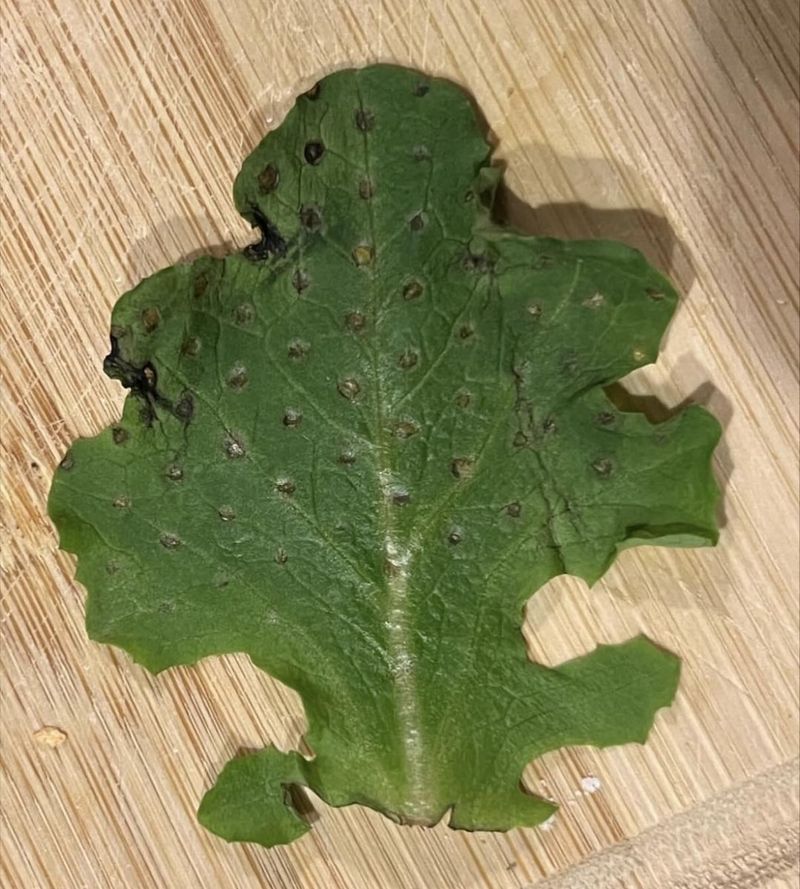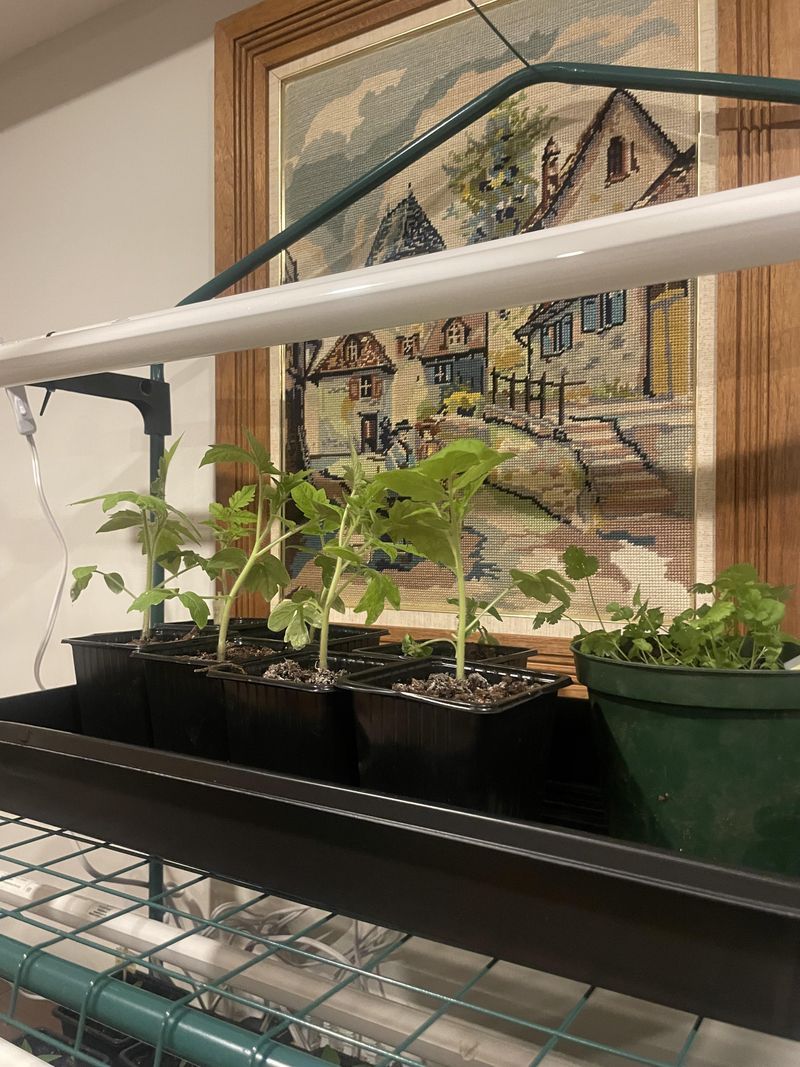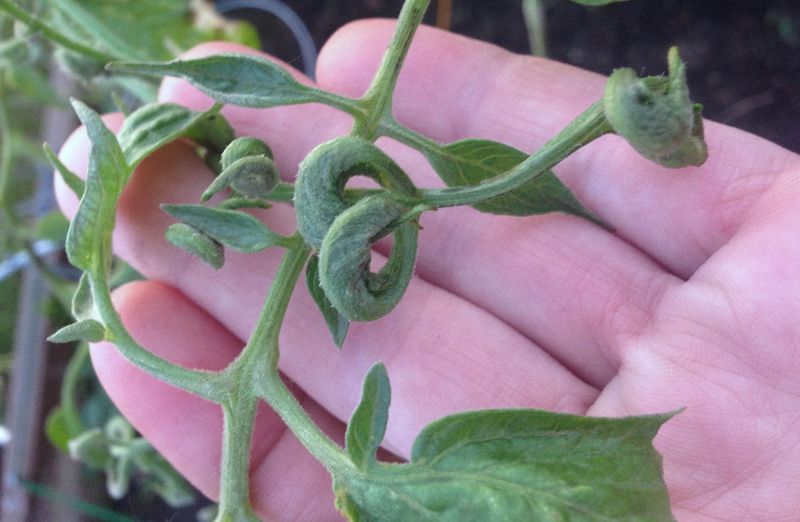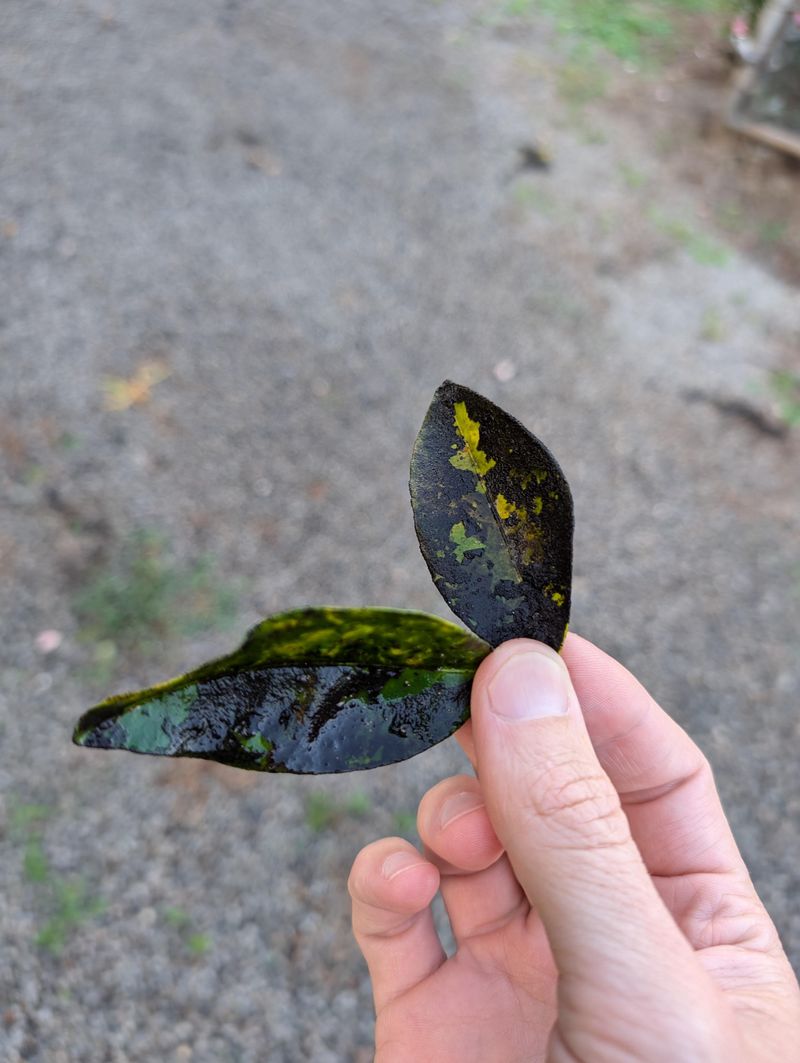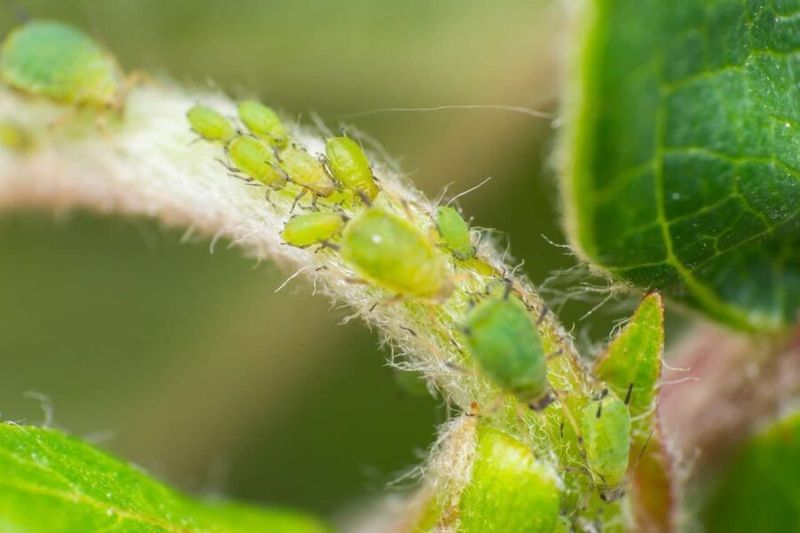Your garden may look green on the surface—but subtle warning signs can hint at deeper problems. Wilting leaves, stunted growth, yellowing, pests, or bare patches can signal that your plants are stressed or your soil is struggling.
These 17 red flags reveal what’s really going wrong—and exactly how to fix it before your garden goes from thriving to failing.
1. Yellowing Leaves Spell Trouble
Yellow leaves often signal nutrient deficiencies in your garden soil. Nitrogen shortage typically causes older leaves to yellow first, while iron deficiency affects young leaves.
The fix? Add compost or an appropriate organic fertilizer based on which leaves are affected. For nitrogen issues, blood meal works wonders. For iron problems, try iron sulfate or chelated iron supplements.
Test your soil before treating to confirm exactly what’s missing. Most garden centers sell affordable soil test kits that take the guesswork out of diagnosing nutrient problems.
2. Wilting Despite Regular Watering
Plants drooping even after watering often indicates root problems. Root rot from overwatering or root-knot nematodes could be the culprits behind this frustrating symptom.
First, check your drainage by digging gently around affected plants. If soil feels soggy and roots look brown or mushy, you’re overwatering. Let soil dry out completely before next watering and consider adding perlite to improve drainage.
For suspected nematode damage (tiny swellings on roots), remove severely affected plants and treat soil with beneficial nematodes or solarize it under clear plastic for six weeks during summer.
3. Stunted Growth Signals Distress
When plants stay small and fail to thrive, something’s definitely wrong. Compacted soil often prevents roots from spreading properly, while poor light conditions starve plants of energy.
Loosen compacted areas with a garden fork, working outward from plant bases. Add organic matter like compost to improve soil structure and encourage earthworms to do natural aeration work for you.
For light issues, track sun patterns in your garden and consider transplanting struggling plants to brighter spots. Sometimes pruning nearby trees or shrubs can dramatically improve light conditions without relocating plants.
4. Holes In Leaves Mean Hungry Pests
Mysterious holes appearing in foliage? Insect pests are having a feast at your garden’s expense. Caterpillars, beetles, and slugs are common culprits that can quickly decimate plants.
Look under leaves during early morning or evening hours to catch these munchers in action. For caterpillars and beetles, try organic Bacillus thuringiensis (Bt) spray or neem oil. These target pests while sparing beneficial insects.
For slugs and snails, set shallow dishes of beer as traps or create barriers with diatomaceous earth around vulnerable plants. Hand-picking larger pests during evening garden walks can also make a significant difference.
5. Powdery White Coating On Leaves
That dusty white film covering your plants is powdery mildew, a fungal disease that thrives in humid conditions with poor air circulation. It weakens plants by blocking sunlight from reaching leaf surfaces.
Prune crowded areas immediately to improve airflow between plants. Water at soil level rather than from above to keep foliage dry, preferably in morning hours so any moisture evaporates during the day.
Mix one tablespoon of baking soda with a teaspoon of liquid soap in a gallon of water and spray affected areas weekly. For severe cases, organic fungicides containing sulfur provide effective control without harming beneficial garden creatures.
6. Blossom End Rot Ruins Tomatoes
Finding dark, leathery spots on the bottom of tomatoes, peppers or squash? That’s blossom end rot, caused by calcium deficiency often triggered by inconsistent watering.
Maintain even soil moisture with regular deep watering and mulch application. Sudden fluctuations between dry and wet conditions prevent plants from absorbing calcium properly, even when it’s present in soil.
Add crushed eggshells or lime to soil if calcium levels are truly low. For immediate help, spray plants with calcium solution found at garden centers. Remove affected fruits so plants can focus energy on producing healthy new ones.
7. Cracked Fruits Signal Water Issues
Sudden cracks in tomatoes, melons, and other fruits typically happen after heavy rain follows a dry period. The rapid water uptake causes fruits to expand faster than their skins can grow.
Maintain consistent soil moisture through regular watering schedules. Apply 2-3 inches of organic mulch around plants to regulate soil moisture levels and prevent dramatic fluctuations that lead to cracking.
For particularly susceptible varieties, consider harvesting fruits slightly earlier when rain is forecast. Some crack-resistant varieties are available for gardens prone to irregular rainfall patterns – look for these options when planning next season’s garden.
8. Curling Leaves Reveal Multiple Problems
Leaf curling can indicate several issues depending on direction and appearance. Upward curling often signals heat stress or aphid infestation, while downward curling may indicate virus problems or chemical damage.
Check leaf undersides for tiny insects. If aphids are present, spray with strong water jets to dislodge them or apply insecticidal soap. For heat stress, provide temporary shade during peak afternoon hours and ensure adequate watering.
Virus-infected plants typically show additional symptoms like mottled coloring or stunted growth. Unfortunately, these plants should be removed entirely to prevent spread to healthy neighbors. Always sanitize tools after handling affected plants.
9. Leggy, Stretched Plants Need Light
Plants growing tall, thin, and pale with unusually large spaces between leaves are desperately reaching for more sunlight. This condition, called etiolation, severely weakens stems and reduces flowering and fruiting potential.
Relocate affected plants to sunnier spots immediately. For indoor seedlings, provide grow lights positioned just a few inches above plant tops, raising them as plants grow.
Prune leggy growth back by about one-third to encourage branching and denser growth once light conditions improve. Staking may be necessary temporarily to support weak stems until they strengthen. Next planting season, be realistic about your garden’s light conditions when choosing plant varieties.
10. Brown Leaf Edges Signal Drought Stress
Crispy, brown leaf margins indicate your plants are suffering from lack of water or excessive fertilizer. The browning occurs as plants sacrifice outer leaf portions to conserve moisture for survival.
Increase watering frequency during hot periods, focusing on deep, thorough irrigation rather than frequent light sprinklings. Water should penetrate 6-8 inches into soil to reach root zones effectively.
If you’ve recently fertilized, flush the soil with plain water to dilute excess nutrients. Adding organic matter improves soil’s water-holding capacity for long-term drought resistance. Consider grouping plants with similar water needs together for more efficient garden management.
11. Mold On Soil Surface Indicates Overwatering
Fuzzy white or green growth on your garden soil isn’t just unsightly – it’s a clear warning that conditions are too wet. Excessive moisture creates perfect breeding grounds for mold and fungal diseases that can attack plant roots.
Cut back watering immediately and remove the top inch of affected soil if possible. Improve drainage by adding coarse sand or perlite to heavy soils, and ensure containers have adequate drainage holes.
Water only when the top inch of soil feels dry to touch. Morning watering allows soil surface to dry during the day, discouraging mold growth. Consider a thin layer of cinnamon as a natural anti-fungal treatment for persistent problems.
12. Distorted New Growth Suggests Herbicide Damage
Twisted, cupped, or strangely elongated new leaves often indicate herbicide drift from nearby lawns or gardens. Even tiny amounts of weed killers can severely damage sensitive garden plants.
Rinse affected plants with clean water immediately if you suspect recent exposure. Remove severely damaged portions and provide optimal growing conditions to help plants recover their strength.
Prevent future problems by creating buffer zones between treated areas and gardens. Avoid applying any herbicides on windy days, and cover valuable plants with plastic sheeting when neighbors are treating their lawns. Consider switching to non-chemical weed control methods in your own garden.
13. Failure To Flower Frustrates Gardeners
Plants producing lush foliage but no blooms typically suffer from excessive nitrogen, insufficient sunlight, or improper pruning. The balance of nutrients plays a crucial role in triggering flowering cycles.
Switch to phosphorus-rich fertilizers (middle number higher in NPK ratio) to encourage blooming. Bone meal or rock phosphate work well as organic options. Ensure plants receive adequate sunlight hours appropriate for their species.
Check your pruning timing carefully. Many flowering shrubs form buds on previous season’s growth, so pruning at wrong times removes potential flowers. Research specific bloom cycles for your plants and adjust maintenance schedules accordingly for spectacular future displays.
14. Ants Swarming Plants Signal Hidden Problems
Finding ant highways running up plant stems usually indicates they’re farming honeydew-producing insects like aphids or scale. These tiny sap-suckers weaken plants while ants protect them from natural predators.
Look closely at stems and leaf undersides for clusters of small insects. Wipe them off with cotton swabs dipped in rubbing alcohol for immediate control. Create ant barriers using sticky tape or petroleum jelly around plant stems.
Introduce beneficial insects like ladybugs or lacewings that feed on aphids. For persistent problems, diatomaceous earth sprinkled around plant bases deters ants without harming plants. Remember that ants are symptoms of the real problem – focus on eliminating the honeydew producers they farm.
15. Sooty Black Coating On Leaves
Black, soot-like coating on leaves is sooty mold fungus growing on honeydew secretions from sap-sucking insects. While not directly attacking plants, it blocks sunlight and reduces photosynthesis capacity.
Address the underlying insect infestation first – usually aphids, scale, or whiteflies hiding on leaf undersides. Insecticidal soap or neem oil effectively controls these pests when applied thoroughly to all plant surfaces.
Once pests are eliminated, gently wash affected leaves with mild soapy water using soft cloth or sponge. Severely affected leaves may need removal. Prevent recurrence by monitoring plants regularly for early signs of insect activity before honeydew accumulates enough to support mold growth.
16. Sudden Plant Collapse Indicates Root Problems
Finding previously healthy plants suddenly wilted and collapsed often points to root damage from burrowing pests or soil-borne diseases. Voles, grubs, or fungal pathogens can destroy root systems virtually overnight.
Carefully dig around collapsed plants to examine roots. White, healthy roots indicate recent physical damage, while brown, mushy roots suggest disease issues. Remove affected plants completely, including all root fragments.
For grub or vole problems, appropriate barriers or traps help protect remaining plants. If fungal diseases like Fusarium or Verticillium are suspected, avoid replanting susceptible species in the same location for at least three years. Consider resistant varieties when replanting affected areas.
17. Sticky Residue On Plant Surfaces
Mysterious shiny, sticky substance coating leaves and nearby surfaces is honeydew – the sugary waste product excreted by sap-feeding insects. This sticky residue attracts ants and supports sooty mold growth if left untreated.
Inspect plants carefully, focusing on new growth and leaf undersides where aphids, mealybugs, and scale insects typically feed. For light infestations, strong water sprays dislodge many pests. Insecticidal soap or horticultural oil provides effective control for persistent problems.
Encourage natural predators like ladybugs, lacewings, and parasitic wasps by avoiding broad-spectrum insecticides. These beneficial insects provide long-term pest management while maintaining garden ecosystem balance. Prune heavily infested portions if infestation is concentrated in specific areas.

